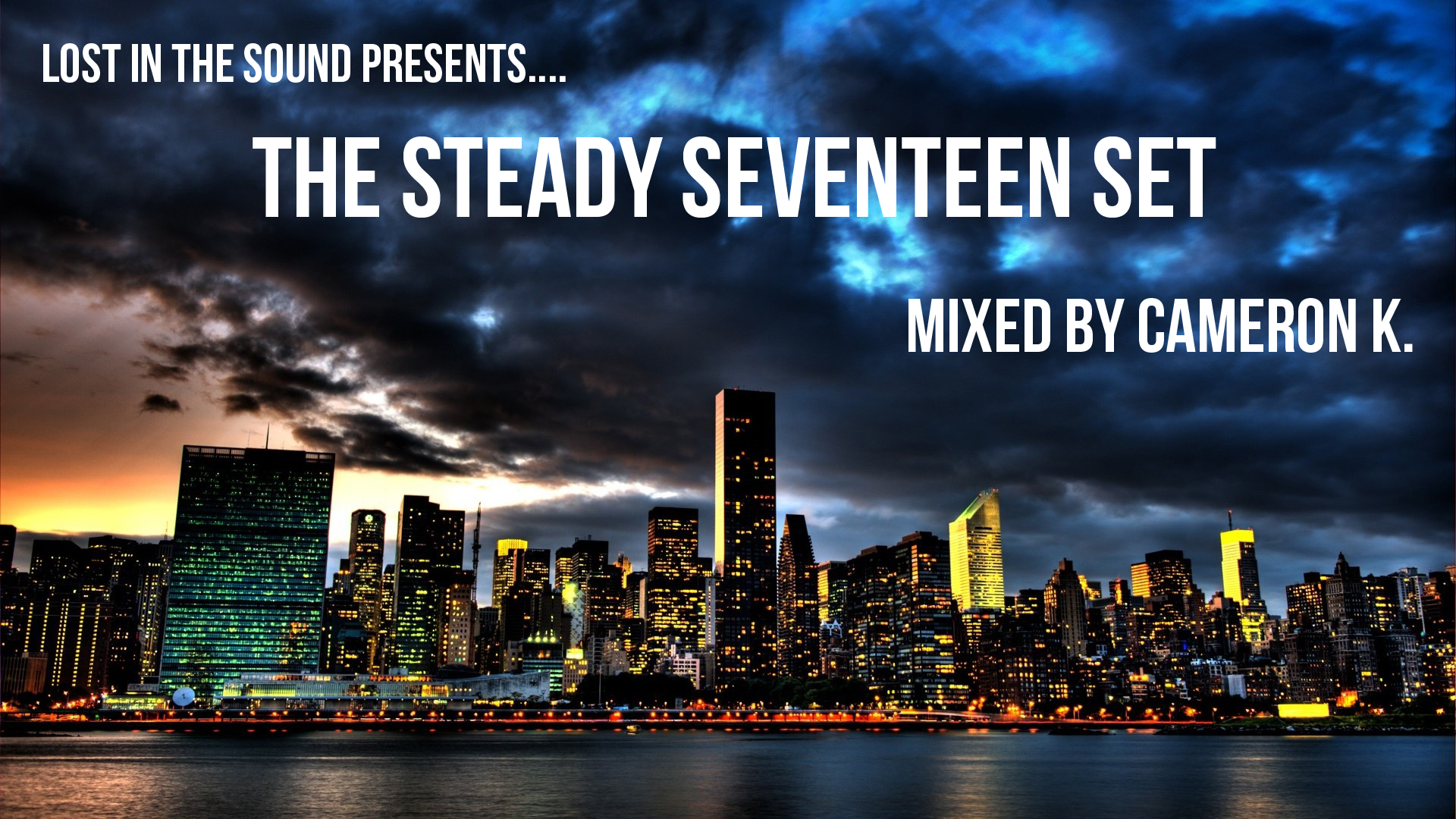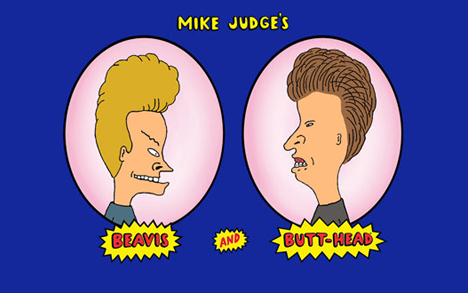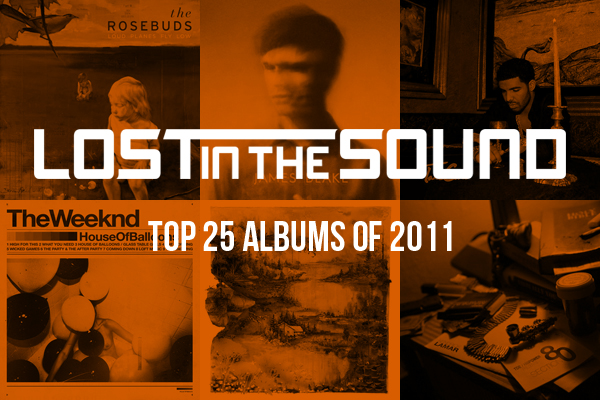Featured
Odd Future’s Earl Sweatshirt Returns


Klosterman vs. tUnE-yArDs vs. Collapse Board vs. Wikipedia
Or, Why Johnny Can’t Spell without Abusing His Caps Lock

Very recently mostly-esteemed music critic Chuck Klosterman took aim at tUnE-yArDs and the zeitgeist in general, cranking out an oddly restrained character assassination piece entitled “The Pitfalls of Indie Fame.” The central point of the article, that no one’s going to be listening to Tune-yards (I won’t be abusing my Shift key, if you don’t mind) a year from now, managed to get drowned out by the half-hearted bashing and the general feeling that Klosterman couldn’t even muster up the enthusiasm to truly take Tune-yards for a one-way ride out to an abandoned lot to bury it properly.
If this is Klosterman’s idea of “assassination,”, it’s not unlike attempting to off someone with a Nerf bat. Possible, yes. But man, your heart’s got to be in it. Chuck’s isn’t. Deadlier character assassination pieces usually don’t couch themselves in softened language or freely admit their ignorance of the subject matter. Klosterman does both, admitting he’s only listened to the album (w h o k i l l, henceforth referred to as “whokill,” [if referred to at all]) once and throwing around qualifiers like “suppose” and “possibly” and etc. to further hedge his hazy bets.
Scott Creney at Australian music blog Collapse Board rightly took Klosterman’s post to task, mocking the general half-assedness of the attack while also pointing out a grim undercurrent of sexism underlying Klosterman’s piece. Creney’s sentence-by-sentence breakdown of Klosterman’s article doesn’t get much better than this (shame it’s on page 1 of a 4-page post, but these things happen…)
I’m not really in a position to argue for (or against) the merits of tUnE-yArDs, simply because I’ve barely listened to w h o k i l l. Had it not won the Pazz & Jop poll, I might not have listened to it at all.
With all these disclaimers, I’m starting to wonder why Chuck bothered writing this fucking article in the first place.
[Full disclosure: I, like Klosterman, have barely listened to Tune-yards since being pointed in their/her direction by another post at Collapse Board (dealing with a genre called “Clank”). I gave Tune-yards a good, solid chance. I listened to one track (which I didn’t care for) and sought out a few more (at the greatest music site in the world — Youtube) before coming to the conclusion that this was Not For Me.
However, (and here’s a statement that will pain Scott Creney greatly) they do sound like the sort of thing a certain ex-girlfriend of mine would have enjoyed. Between the neo-hippie trappings, the world music beats and the goddamn ukulele, this would be right up her alley.
The closest I’ve been to this alley full of neo-hippies and world beats is attending shows by Banco de Gaia and Children of the Bong and finding myself attempting to enjoy some sequencer twiddling and sample firing while being surrounded by exactly the sort of neo-hippies I normally avoid, thus relegating me to spending the rest of my evening glaring darkly at the heavily-scented (and sandaled) crowd, all of whom were busily harshing my mellow by so very clearly enjoying theirs.]
If Creney peaks early with his dismantling, the same can be said for Klosterman’s kid-glove hit piece. The most interesting of his listed rationalizations is his first one, from which some sort of sexism can be inferred (should it not exist already), but more bizarrely a claim is made about Tune-yards’ Wikipedia entry’s odd lack of female pronouns.
1. tUnE-yArDs is essentially one person, a somewhat androgynous American woman named Merrill Garbus. This is her second album. I get the sense that asexuality is part of her hippie aesthetic, because I just looked at the tUnE-yArDs Wikipedia page and noticed that the wiki writer put a lot of effort into never using gender-specific pronouns.
For someone (or more likely, a group of someones) to have put together a Wikipedia entry in this fashion would be extremely odd, seeing as Wiki’s relentless and joyless enforcers don’t allow such non-gender-specific dickery. Assuming Merrill Garbus isn’t updating her own Wikipedia page (clearly Against The Rules), then who out there in the internet would feel Garbus needed to rendered completely sexless for posterity?
The answer is: no one.
The language on the Tune-yards Wikipedia page is no more stilted than anything else clearly written by fans and rewritten by academics (or aspiring comment section mods). There are two distinct “hers” on the page and it doesn’t seem like more are needed.
My first thought was that the page had been altered since Klosterman’s piece ran. Nope, nothing there. In fact, going all the way back to the initial entry, one can find a “her” placed right in the middle of a sentence where one would reasonably expect a pronoun to be used:
In July, 2009 it was revealed that Tune-Yards had signed to the prestigious British label, 4AD and would release a full release of her debut record ”Bird-Brains” on November 16, 2009.
Further research shows that, while various adjustments and expansions have been made, the removal of feminine pronouns wasn’t one of them. What it DOES show in the history is, however, somewhat amusing. Well before Tune-yards was showing up on the radar, certain meandering Youtube commenters were rewriting history in their own image. This from January 17, 2010:
New England-based musician Merrill “Garbage-Mouth” Garbus.
There’s plenty more hate (Origin = [[New England]], [[United States]] and needs to go back there) and the deletion of someone’s full-scale fan-blog-in-progress, but the real comedy lies within the endless battle between the contributors and the mods over the usage of excess spacing (w h o k i l l) and randomly capitalized letters, which commenced on May 4th (moved Tune-Yards to TUnE-YaRdS: The preferred spelling popular usage, in references, and by the subject itself) and raged on into history, with clashes on May 18th, May 26th and 27th. A few minor skirmishes resulted in a January 1st proclamation (apparently knowledge never sleeps/parties/gets hungover) that “normal spelling and capitalization rules would apply, rather than the artist’s choice” (this being Wikipedia, not wiKi-PeDia, after all). The proclamation was promptly ignored, leading up to one of the finest damning sentences composed on a Wikipedia history page:
Wikipedia is an encyclopedia, not a hipster music website. write as you would pronounce, so who kill (dropping the caps is fine) and Tune-Yards (not that eyesore she uses)
Game. Set. Match. Please collect your broken shift keys and spacebars and gTfO.
So, while Tune-yards’ fans may be undyingly protective of their odd spacing and StudlyCaps, they seem less than concerned with shrouding Merrill Garbus’ sexuality from bearded music critics out there in internet-land (more specifically — Grantland).
Beyond the thing that isn’t actually happening at Wikipedia, what other reasons does Klosterman offer in support of his “here today, mocked tomorrow” hypothesis?
The only thing I knew was that the words “Tune Yards” were spelled “tUnE-yArDs,” which seemed like reason enough to ignore it (not a good reason, but a reason nonetheless).
It’s not a “good” reason, but it’s certainly acceptable. After all, I’ll never be able to listen to Vampire Weekend after seeing this photo of them playing live. Superficial, yes. But COME ON.
Garbus was formerly employed as a puppeteer, if that sort of thing matters to you.
Sadly, I think it does. If the words “puppeteer” and “ukulele player” are not followed shortly by “children’s television host,” then the world has gone off its moorings and needs a hard reset.
w h o k i l l is not avant-garde, but it is experimental.
And has extra spaces. Let’s not forget about that. See also: reasons to ignore it (above).
But all sneering punctiliousness aside, Klosterman does have a point: Tune-yards is altogether Too Much. It won’t last because it can’t possibly last. It all carries the heavy scent of pretentiousness and affectation even if none actually exists. The odd vocalizing. The hippie-meets-industrial aesthetic. The random capitalization and kerning issues. The goddamn ukulele.
Klosterman cites Arrested Development as a comparable musical entity, one critically adored and hailed as the savior of rap from the thugs, but just try listening to them now without cringing a bit. Try just looking at the album cover without being tempted to avert your eyes and shout , “What in the hell is that? An interpretative dance troupe without a bus pass? An umbrella??!??!?”
You can have a few of these elements and still be ok. But concentrated amounts of “left field” has a strange way of making you an unwelcome house guest in a very short matter of time. The further out the artist is, the sooner they get dropped as former fans make their way back to more centrally-located amusements.
The Steady Seventeen Set (Mixed By Cameron K.)

Tracklist:
El Lobo Loco (Koen Groeneveld Remix)
Half Naked (Art Department’s Shades Of Gothica Remix)
Is This Something (Jones Fly Edit)
Rose Of Jericho (Original Mix)
Forward Motion (Feat. Ali Love)
Equilibrium (Original Mix)
Interview: The Smith Street Band

What are your names and what are your roles in the band?
Wil Wagner – Vocals/Guitar, Tom Lawson – Guitar/Vocals, Lee Hartney – Guitar, Michael Fitzgerald – Bass, Chris Cowburn – Drums, Vocals
What is the origin of your band’s name?
We were originally called Wil Wagner and The Smith Street Band, as a take off of Bruce Springsteen and The E Street Band, but changed the name to just the Smith Street Band as the band became more and more of a collaborative effort. (more…)
Beavis & Butthead: Tastemakers

Presumably channeling Mike Judge’s musical tastes, Beavis and Butthead provided US viewers with the first glimpses of several well-below-the-radar bands including the Dead Milkmen, the Cramps, Daisy Chainsaw, the Plasmatics, Dread Zeppelin, Ethyl Meatplow, My Life with the Thrill Kill Kult, Shonen Knife, the Dylans, Napalm Death, Circle Jerks, the Revolting Cocks, Pop Will Eat Itself, Fatima Mansions and Six Finger Satellite, just to name a few.
But for me, two never-before-seen groups stood out from the crowded pack of snot-nosed punks, industrial offshoots, cult favorites and metallic punishers.
Army of Lovers – Crucified
Army of Lovers may have been huge in Europe but they never had a chance over here in the US. It’s probably safe to say that Americans were never going to embrace a group that took ABBA’s disco tendencies and hitched their ultra-melodic fluff to an uber-camp mixture of gay and religious iconography. This particular Army was dedicated to taking music completely over the top, leaving any sort of subtlety behind for the Pet Shop Boys of the world.
“Over the top” is an understatement. It’s as if Army of Lovers reached the “top” they wished to climb over and found its lack of altitude disappointing. Setting up a base camp (emphasis on that last word) near the peak, the Lovers erected a new top, piling pirate shirts and eyeliner on top of crucifixes and torn hymnals, adding Eurovision vamping to the whole mess before clambering stylishly to the new top and planting a flag made of suddenly discarded clothing (mainly pants) at the pinnacle.
While Beavis and Butthead were clearly not the target demographic, they were won over by occasional member La Camilla’s top-heavy charm. And while that aspect of the video was clearly eye-catching, I was sucked in more by the gaudy sacrilege of Crucified, which echoed the Jesus and Mary Chain’s desire to “die just like Jesus Christ,” replacing the black hole nihilism with something that could possibly be classified as a religious swoon. The JAMC were looking for the end. The Army of Lovers had already died multiple times, “crucified like their savior.” Throwing in a bit of tossed-off French (I cry I pray mon dieu) doesnt’ hurt.
Having grown up in an ultra-religious Protestant household, I found the whole experience oddly fascinating: disco-fied Europop baiting our Lord and Savior with a devastating accuracy that a million black metal bands could never hope to duplicate. The music made the message “safe” and the high camp delivery system added another layer of sinfulness to the whole picture. Gays and God have never gotten along, at least according to a majority of God’s self-appointed earthly mouthpieces.
Alien Sex Fiend – Now I’m Feeling Zombified
The second band which would have flown completely under my radar had Beavis and Butthead not rescued them from subjective obscurity is Alien Sex Fiend. ASF was a part of London’s influential Batcave scene, a breeding ground for dozens of goth rockers including Specimen, Bauhaus, Sex Gang Children, as well as non-goths like Robert Smith and Nick Cave.
Alien Sex Fiend’s epic Now I’m Feeling Zombified got the nod from B&B, primarily for its Alice Cooper-esque showmanship. Front man Nik Fiend’s aggressive use of eyeliner and pancake makeup made every contemporary hair metallist look even more ridiculous and the whole experience was not unlike stumbling into the wrong nightclub late at night and realizing that spending any length of time here might permanently alter your perspective on life/require use of unfamiliar drugs or “marital aids.” Disconcerting, but in an oh-fuck-let’s-see-where-this-is-going sort of way.
Alien Sex Fiend always stood out from the goth crowd with their use of spacy electronics and obvious love for barely double-entendre, AC/DC-level dirty jokes. (See also: Drive My Rocket, Stuff the Turkey, Burger Bar Baby) Despite traversing the same darkened alleys as Bauhaus, etc., ASF was equally influenced by the filthy psychobilly of the Cramps and the soaring, searing sounds of Hawkwind.
Now I’m Feeling Zombified is taken from Alien Sex Fiend’s glorious, sprawling, epic mess of an album, 1990’s Curse. Its opening track, the undeniably “goth” Katch 22 is a jackbooted epic (in four parts, no less) but it hardly sets the tone for the rest of the album, which veers from psychotic guitar rock (Eat! Eat! Eat!, I Think I) to murky psychedelia (Ain’t Got Time to Bleed) to tossed off dalliances (the 20-second promo Radio Jimi, Dali-isms) while still finding time to drop in goth epics like the track in question and other reminders that, yes, ASF is goth (Stress). They even find time for a cover of The Cramps’ Mystery Plane, recasting the original’s jangling blues shuffle as an expansive space rocker, emphasizing the timeslip of the “meanwhile the world slows/mad daddy drives a ufo” line.
So, after too many years, and entirely too many words, I’m making amends. Who knew a couple of moronic teenagers could open the door to new musical possibilities? Certainly they had no intention of helping anybody, but the end result is clear: Beavis and Butthead influenced my music tastes more than anything put into heavy rotation by their hosting network.
LITS’s Top 25 Albums Of 2011

Here are our favorite albums from 2011. We hope you find something you enjoy just as much as we have over the past twelve months.
25. St. Vincent – Strange Mercy
24. Moon Duo – Mazes
23. Owen – Ghost Town
22. Beau Navire – Hours
21. Caroline – Verdugo Hills
20. Wilco – The Whole Love
19. Death in Vegas – Trans-Love Energies
18. Belong – Common Era
17. SBTRKT – SBTRKT
16. Leann Grimes – Leann Grimes
15. M83 – Hurry Up, We’re Dreaming
14. The Roots – Undun
13. Radiohead – The King of Limbs
12. ASAP Rocky – LiveLoveA$AP
11. The Horrible Crowes – Elsie
10. Arrange – Plantation
09. Fleet Foxes – Helplessness Blues
08. The Wonder Years – Suburbia I’ve Given You All and Now I’m Nothing
07. Beach Boys – The Smile Sessions
06. The Rosebuds – Loud Planes Fly Low
05. James Blake – James Blake
04. Kendrick Lamar – Section.80
03. Drake – Take Care
02. Bon Iver – Bon Iver
01. The Weeknd – House of Balloons
Interview: Baby Giraffe
 As the modern day music scene develops, it’s becoming more and more common for people to self produce all of their music. As we take a look inside the mind of Baby Giraffe, we see how beautifully crafted melodies can lie behind a bedroom door just as often as they do inside of a professional studio. From an independent and unsigned artist, we can also see large differences in their perspective of the music scene.
As the modern day music scene develops, it’s becoming more and more common for people to self produce all of their music. As we take a look inside the mind of Baby Giraffe, we see how beautifully crafted melodies can lie behind a bedroom door just as often as they do inside of a professional studio. From an independent and unsigned artist, we can also see large differences in their perspective of the music scene.
What is your name and band name?
Baby Giraffe: My name’s Michael and I’ve been recording under the moniker Baby Giraffe since the mid 2000’s.
Can you explain the reasoning to why you chose the name “Baby Giraffe” and what it means to you?
Baby Giraffe: It was a name that was associated with me when sme old roommates of mine were playing a game of “what animal do you look like.” I’m fairly tall, gangly, docile and my hair used to naturally tuft a bit at the top so I figured it was appropriate.
What is the music scene like in Ontario, Canada?
Baby Giraffe: Being from the largest city in Canada, we have quite an amazing scene. A lot of acts have broke through from here in the last decade in one incarnation or another. It’s important to note that there’s at least a handful of good, accessible venues if you’re not already an established act to build from. Places like the Rancho Relaxo, the Garrison, the Silver Dollar, etc., are all venues you can find some great young artists at. No pay-to-play bullshit, although the city does have some of those promoters as well. (more…)
Clams Casino and the “Just For Now” Sample

That’s something you can’t find with new-age (pardon the pretentiousness) producers. Sure, T-Minus creates synth-laden beats with a similar loftiness, but the soundscape doesn’t even come close. Face it – a track like “She Will” needs Drake and Lil Wayne to fully function.
What may be more impressive is how all of his fantastic beats come together. “I’m God”, perhaps the defining song so far in both Clams Casino’s and Lil B’s careers, takes it roots in Imogen Heap‘s breathtaking “Just For Now”, a song that sounds nothing like “I’m God”.
MP3: Imogen Heap – “Just For Now”
MP3: Lil B – “I’m God” (Prod. by Clams Casino)
That same song, “Just For Now”, was even been sampled by Clams Casino more than once. ASAP Rocky‘s “Bass”, believe it or not, comes from the very same sample. Originally intended for Lil B, Clams Casino actually reworked the beat after the Based God decided that one part of the song was a bit too fast for him, ultimately resulting in yet another song from the same sample entitled “I’m The Devil”. That part was thus taken out, slowed down, and given to Rocky.
MP3: ASAP Rocky – “Bass” (Prod. by Clams Casino)
MP3: Lil B – “I’m The Devil” (Prod. by Clams Casino)
Simply put on your headphones and slip away into the music…
Live Review: Mogwai @ Shanghai, China’s MAO Livehouse (11/28)
Bands: Mogwai, Wang Wen
Location: Shanghai, China’s MAO Livehouse
Date: November 28, 2011

And for the most part, they held their own, warming up the crowd for the main act. Aside from being surprised by the occasional, shrieking outbursts of the Shanghai concertgoers, Wang Wen found themselves enjoying the attention of a good-natured crowd hungry for some solid instrumental music. As they worked through their tremolo-heavy set, however, it became clear that people were aching to see Mogwai take their turn and the Chinese band good-naturedly wrapped things up, leaving the crew to set up and the venue to buzz excitedly about what was to come.
With a flash of lights and a blast of smoke, Stuart Braithwaite announced his band’s triumphant appearance with a few thank-you’s and waves. With that, Mogwai launched directly into Hardcore Will Never Die, But You Will‘s opening track “White Noise”. Complemented by the hazy, smoke-filled venue’s dazzling light show, Mogwai’s music hit hard, sending the crowd into uproar.




All photos by Kevin Ma
Setlist:
01. White Noise
02. Ithica 27 – 9
03. How To Be a Werewolf
04. I’m Jim Morrison, I’m Dead
05. Mexican Grand Prix
06. Helicon 1
07. Auto Rock
08. You’re Lionel Richie
09. Friend of the Night
10. Hunted By A Freak
11. Mogwai Fear Satan
12. Batcat
Encore:
01. My Father, My King


Connect